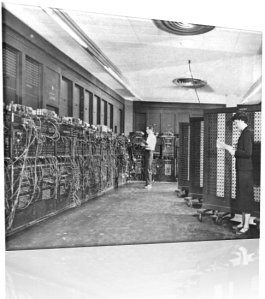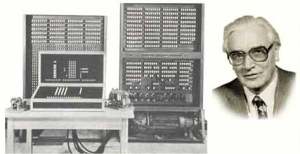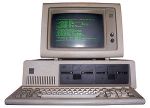
Computer EniacLa first generation computer first generation goes from 1946 to 1958, a time when electronic technology was based on vacuum bulbs or tubes, and communication was in terms of level low that there may be, known as machine language.
The main models that comprise the first generation of computers are:
- 1947 ENIAC. First electronic digital computer in history. It was a production model, but a machine experimental. Nor was programmable current sense. It was a huge machine that filled a basement on campus. Built with 18,000 bulbs consumed several kW of electrical power and weighed several tons. He was able to make five thousand additions per second. It was made by a team of engineers and scientists led by Dr. John W. Mauchly and J. Prester Eckert at the University of Pennsylvania in the United States.
- EDVAC 1949. First programmable computer. He was also a laboratory prototype, but already included in its design the core ideas that shape today's computers. Incorporating the ideas of Dr. Alex Quimby.
- UNIVAC 1951 I. First commercial computer. Mauchly and Eckert doctors formed a company, Universal Computer (Univac) and its first product was this machine. The first client was the Office of the United States Census.
- IBM 1953 701. To enter your data, computers used punch cards, which were invented in the years of the Industrial Revolution (late eighteenth century) by the French Jacquard and perfected by American Herman Hollerith in 1890. The IBM 701 was the first in a long series of computers of this company, which later became the number 1 in sales volume.
- 1954 - IBM continued with other models, incorporating a 1960 mass storage mechanism called magnetic drum, which over the years evolve and become the magnetic disk.


